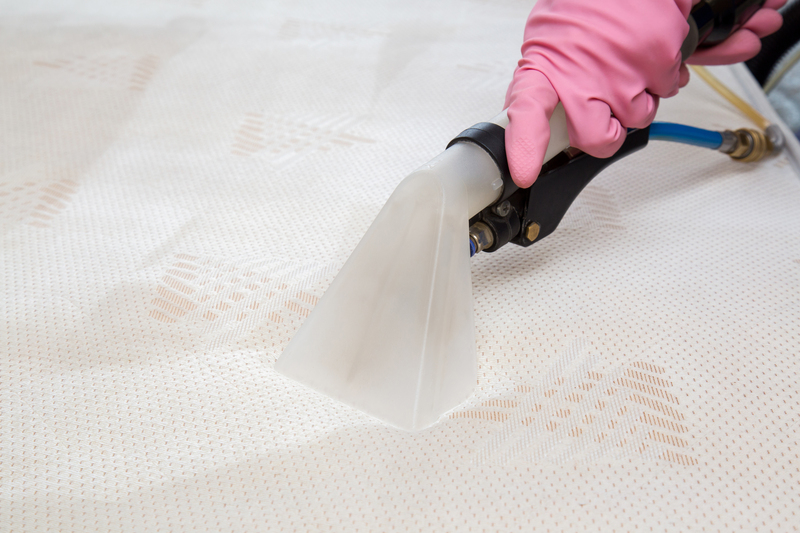Get Rid of Kettle Limescale Efficiently
Posted on 17/07/2024
Limescale buildup in kettles is a common issue that can affect the taste of your tea and coffee, as well as potentially damage your kettle over time. It forms from the residue of calcium carbonate left behind when hard water evaporates. If you're tired of dealing with this chalky deposit, you're in the right place. This guide will help you get rid of kettle limescale efficiently.
Understanding Limescale
Limescale is a hard, chalky deposit predominantly made up of calcium carbonate. It's a common issue in areas with hard water. Aside from being unsightly, limescale can affect the longevity of your kettle and even interfere with its performance. When left untreated, it can lead to increased energy consumption and longer boiling times.

Why Regular Maintenance is Essential
Regularly descaling your kettle isn't just about aesthetics or taste--it's about maintaining the appliance's efficiency and lifespan. Ignoring limescale can lead to permanent damage, causing the need for costly replacements.
Effective Methods to Get Rid of Kettle Limescale
Vinegar Method
One of the most popular and effective ways to combat limescale is by using vinegar. Here's how:
1. Fill your kettle with a mixture of half water and half white vinegar.
2. Let it sit for an hour so the vinegar can break down the limescale.
3. Boil the kettle, then let it sit for another 15-20 minutes.
4. Pour out the mixture and rinse thoroughly with fresh water.
5. Boil the kettle with clean water once or twice to remove any residual vinegar taste.
Lemon Juice Method
Lemon juice is another natural descaler that works similarly to vinegar:
1. Fill your kettle half-full with water and the juice of 1-2 lemons.
2. Let the mixture sit for an hour.
3. Boil the kettle and let it stand for an additional 15-20 minutes.
4. Pour out the mixture and rinse the kettle with fresh water.
5. Boil clean water twice to ensure no lemon taste remains.
Bicarbonate of Soda Method
For a less acidic approach, bicarbonate of soda (baking soda) is also highly effective:
1. Make a paste using three tablespoons of bicarbonate of soda and a small amount of water.
2. Apply the paste to the areas affected by limescale inside the kettle.
3. Let it sit for about 30 minutes.
4. Scrub gently with a non-abrasive sponge.
5. Rinse thoroughly with clean water.
Commercial Descaling Products
If you prefer a store-bought solution, various commercial descaling agents are available. Follow the instructions provided on the product label for the best results. Generally, these products work faster and can tackle severe limescale buildup more efficiently than homemade solutions.
Preventive Measures to Keep Limescale at Bay
1. Regular Cleaning: Make it a habit to clean your kettle at least once a month.
2. Use Filtered Water: Using filtered or bottled water can reduce limescale formation.
3. Descaling Tablets: These are specifically designed to prevent limescale buildup and can be used periodically in your kettle.
Pros and Cons of Different Methods
Vinegar Method
Pros:
- Highly effective
- Natural and safe
- Inexpensive
Cons:
- Strong smell
- May require multiple rinses to eliminate odor
Lemon Juice Method
Pros:
- Natural and safe
- Pleasant smell
- Effective
Cons:
- More expensive than vinegar
- May require more lemons for larger kettles
Bicarbonate of Soda Method
Pros:
- Mild and non-acidic
- Safe for all types of kettles
- Effective for light buildup
Cons:
- Might not be as effective for severe limescale
- Requires scrubbing
Commercial Descaling Products
Pros:
- Highly effective
- Quick and easy to use
- Can handle severe buildup
Cons:
- More expensive
- Chemical-based
Tips for Maintaining Your Kettle
- Clean your kettle regularly to prevent buildup.
- Use a descaling solution, whether natural or commercial, once a month.
- Boil only the amount of water you need to prevent excess scaling.
- Empty your kettle after each use.

Takeaways
- Limescale buildup in kettles is best prevented with regular cleaning.
- Natural solutions like vinegar, lemon juice, and bicarbonate of soda are effective and inexpensive.
- Commercial descaling products can be more efficient but come at a higher cost.
- Preventive measures are essential for maintaining your kettle's efficiency and longevity.
Conclusion
Getting rid of kettle limescale efficiently involves understanding the buildup, using effective cleaning methods, and taking preventive measures. By incorporating regular maintenance routines and selecting the right descaling method for your needs, you can ensure that your kettle remains clean, efficient, and long-lasting. Whether you opt for natural solutions or commercial products, the key is consistency and prompt action to keep limescale at bay.



